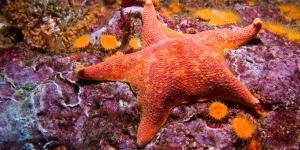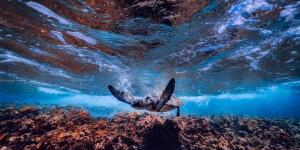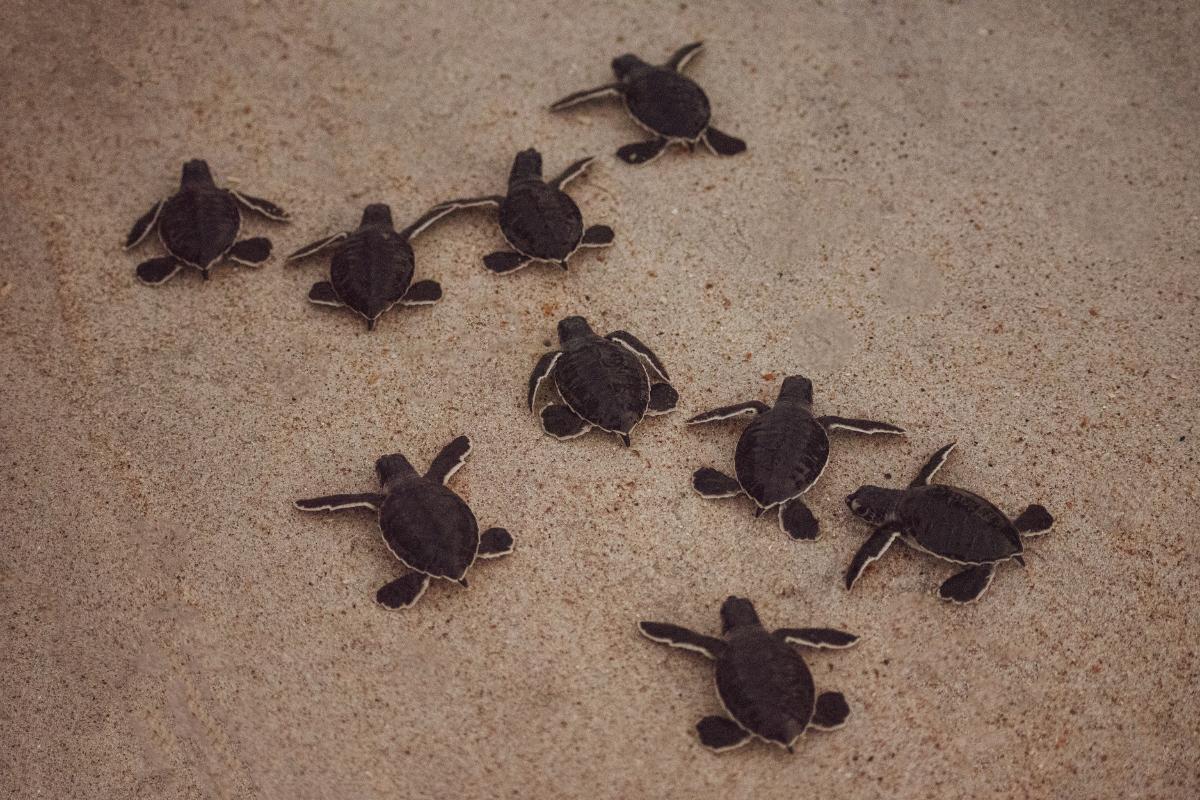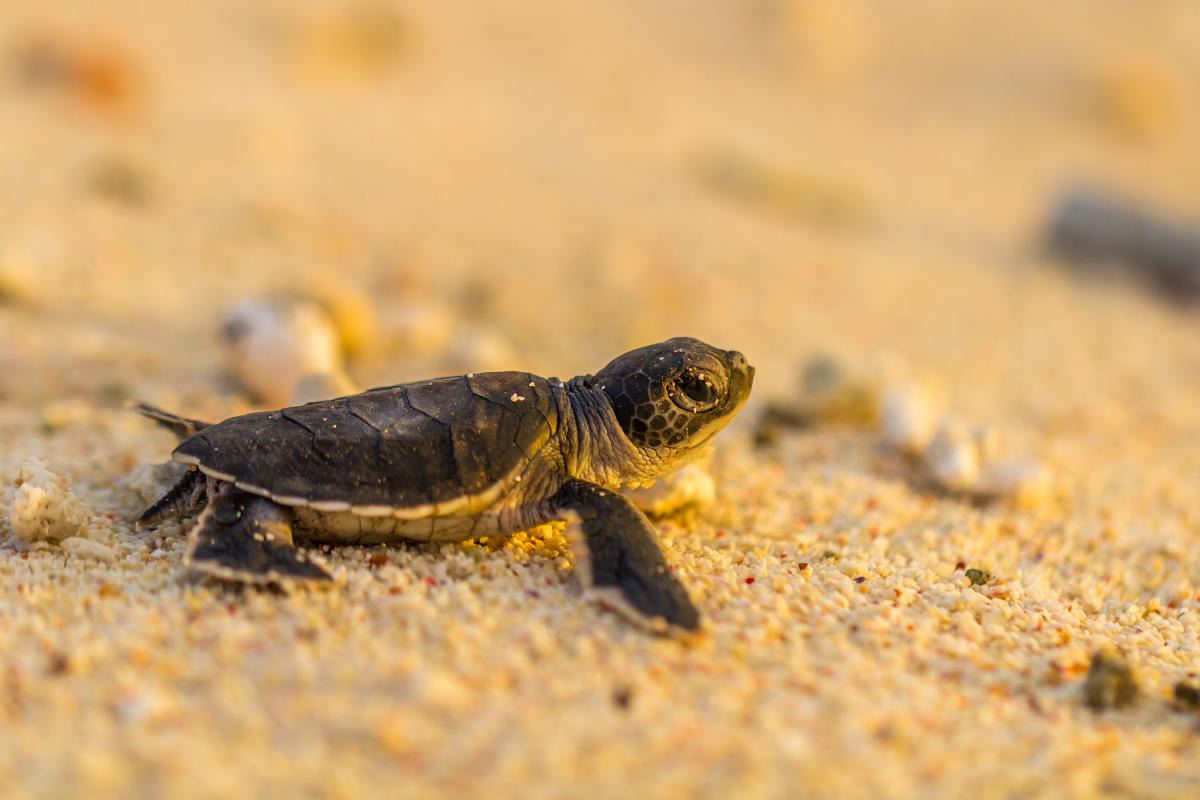How Are Sea Turtles Born?

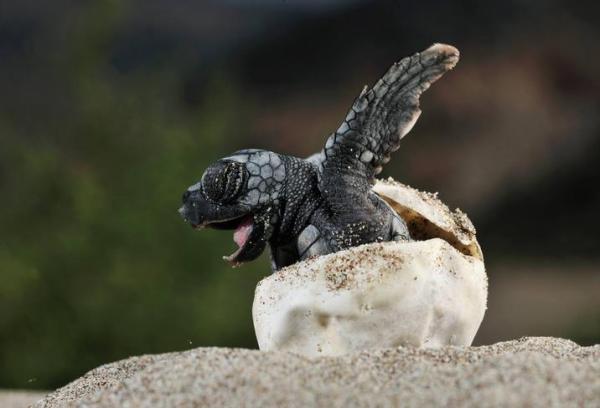
Sea turtles undertake vast oceanic migrations to reproduce, swimming up to 2,000 kilometers from feeding grounds to nesting beaches. Females emerge from the sea only to dig nests and lay eggs, following ancient nesting routes their species has used for millions of years. This complex process, from adult migration to hatchling emergence, showcases the intricate balance between marine and terrestrial life stages that enables sea turtle survival.
The following AnimalWised article explores how sea turtles are born, from egg laying to their first swim in the ocean.
How do sea turtles mate?
The turtle reproduction cycle is a series of steps spanning several months, starting when adult turtles mate in shallow waters. Female turtles can store sperm for up to 4 years, letting them lay fertile eggs even when males aren't present.
It is important to note that sea turtles take 20-30 years to reach sexual maturity, making their first reproductive cycle a long-awaited milestone.
The reproductive cycle begins with migration. Adult turtles swim hundreds or thousands of kilometers from feeding grounds to breeding areas. They use magnetic fields, ocean currents, and water chemistry to navigate their way to specific beaches, often returning to the same areas where they hatched decades earlier.
Turtle mating occurs in shallow coastal waters. Males identify receptive females through species-specific behaviors and pheromone signals. Males also compete for females, sometimes aggressively pursuing potential mates.
During mating, the male uses his long tail to position himself, while the female can store sperm for multiple nesting events throughout the season. Unlike many other reptiles, sea turtles mate in water. The male's curved claws and muscular tail help maintain position during copulation.
Female turtles may mate with several males before nesting, which increases genetic diversity among their offspring. This reproductive strategy helps maintain healthy populations and adaptability to environmental changes.
Beyond sea turtles lies a fascinating world of aquatic reptiles waiting to be discovered, learn more about it here.
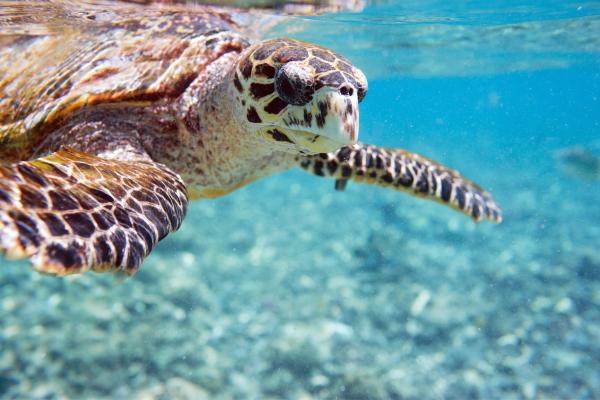
How do female turtles lay eggs?
Female sea turtles emerge from the water at night to nest. They slowly drag themselves above the tide line, a journey taking nearly an hour. After reaching dry sand, they test several spots by digging trial holes until finding suitable conditions.
The nesting process begins as the turtle clears the area with her front flippers and creates a shallow depression. She then precisely digs a 50 cm deep egg chamber using her back flippers. Over thirty minutes, she deposits 50-200 ping-pong sized eggs with soft, leathery shells coated in protective fluid.
After laying, she meticulously conceals her nest. She fills the chamber with moist sand, packs it firmly, and scatters sand in various directions to create misleading trails that confuse predators. Exhausted, she returns to the ocean, but will repeat this two-hour process 3-7 times during the nesting season, returning every two weeks.
The eggs develop over 45-70 days. As it happens with many reptiles, sand temperature controls the sex of the hatchlings: above 31°C produces females, below 28°C yields males, and 29°C results in a mixed ratio. Successful development depends on a combination of environmental factors, such as: sand moisture, oxygen levels, nest depth, and weather conditions throughout incubation.
How often do turtles lay eggs?
Sea turtles typically lay multiple clutches of eggs every two weeks during their nesting season, which can occur every few years.
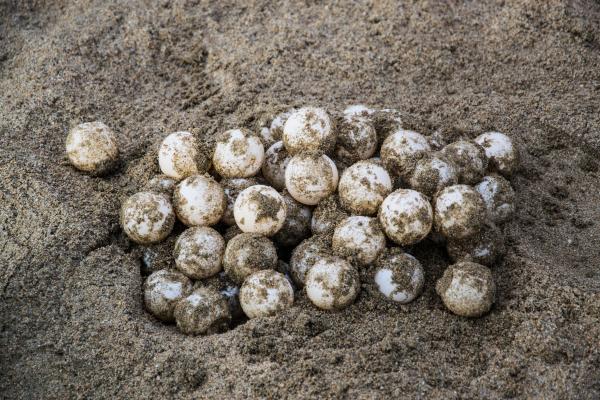
How does a turtle egg develop?
Inside their sandy nest, turtle eggs undergo complex changes during incubation. The soft, leathery shells absorb moisture and minerals from the surrounding sand while allowing oxygen to reach the developing embryos. As weeks pass, tiny turtles form, consuming the egg's nutrient-rich yolk for growth.
Sand conditions affect development speed. In warmer nests, embryos grow faster, while cooler temperatures slow the process. The middle section of the nest typically maintains the most stable temperature. Eggs at the top experience more temperature fluctuation, while bottom eggs stay cooler and take longer to hatch.
The embryos develop a temporary egg tooth, a sharp point on their snout used to crack the shell. They also retain a yolk sac, providing energy for their first days of life. After 45-70 days, the hatchlings begin to break free from their shells, a process requiring several hours of effort.
All eggs in a nest typically hatch within 24-48 hours of each other. The hatchlings remain in the egg chamber for several days, absorbing their remaining yolk sacs and straightening their shells.
This synchronized development increases their chances of survival when they emerge together to make their dash to the sea.
The miracle of turtle birth is just one chapter in an amazing reproductive story, learn more about it in this other article.
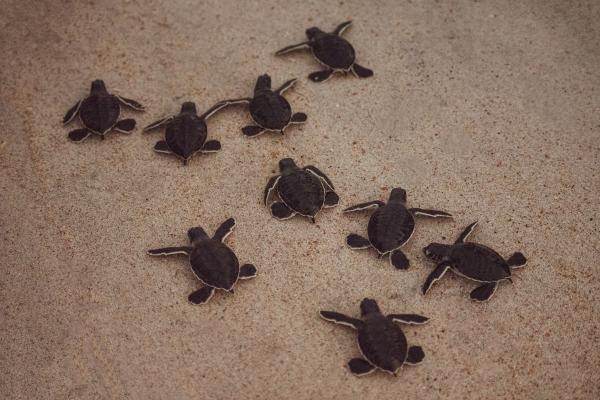
How do sea turtles hatch?
Baby sea turtles work together to break free from their nest. As they hatch, their movement stimulates others to emerge, setting off a synchronized exit. The hatchlings push upward through the sand, a journey taking 3-7 days as they dig, rest, and continue climbing.
Once near the surface, the group waits until sand temperatures cool, signaling nightfall. The cooler sand becomes looser, making it easier to emerge. They burst through the surface together, immediately orienting toward the brightest horizon, which is typically the ocean reflecting moonlight.
The hatchlings race to the water, using the slope of the beach and light cues to guide them. Their first swimming frenzy lasts 24-36 hours, carrying them past the dangerous shoreline waters. They swim constantly, heading for deeper offshore waters where they drift in ocean currents.
As mentioned earlier, this mass emergence strategy improves survival rates. While predators catch some hatchlings, the large number of simultaneous targets increases the odds that others will reach the water safely. Of the thousands of hatchlings that emerge each season, only about one in a thousand survives to adulthood.
Predators pose the first major threat to hatchling sea turtles. Birds, crabs, and small mammals target them during their beach crawl. In the water, fish and sharks prey on the tiny turtles as they swim offshore.
Ever wondered how sea turtles send signals to each other? Our guide reveals their secret conversations.
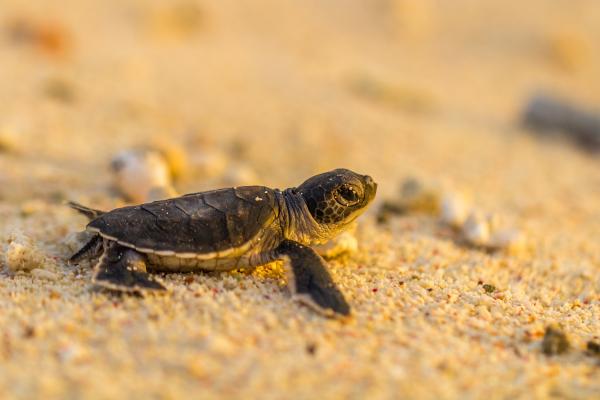
What challenges do baby sea turtles face?
Sea turtle hatchlings face critical challenges from the moment they break through their shells. During their journey from nest to ocean, these small, vulnerable creatures must survive numerous threats that drastically reduce their numbers.
Artificial lighting disorients hatchlings. Instead of moving toward the bright ocean horizon, they often crawl inland toward street lights and buildings. This misdirection depletes their limited energy reserves and exposes them to predators, dehydration, and vehicles.
Ocean pollution impacts survival rates. Hatchlings feed near the surface, where plastic debris concentrates. They mistake plastic particles for food, filling their stomachs with indigestible material. Entanglement in fishing nets and marine debris causes drowning.
Temperature changes affect sex ratios. Rising beach temperatures produce more females, potentially destabilizing future breeding populations. Extreme heat can also reduce hatching success rates by exceeding lethal temperature thresholds.
Can turtle eggs be incubated?
Sea turtle eggs can be artificially incubated, but this requires careful control of temperature, humidity, and positioning. While incubation helps protect eggs from predators and environmental threats, it demands precise monitoring since temperature affects sex determination. Many conservation programs use incubation as a last resort, preferring to protect natural nests when possible.
The hatchling's dash to the sea is just the beginning. Discover their incredible lifelong odyssey.
If you want to read similar articles to How Are Sea Turtles Born?, we recommend you visit our Facts about the animal kingdom category.
- Joseph Castro. (08/02/2019). Animal Sex: How Galapagos Tortoises Do It. 2019, from Live Science Website: https://www.livescience.com/53632-animal-sex-galapagos-tortoises.html
- «BOE» No. 281, 24/11/1995. (24/05/1996). Head of State, BOE-A-1995-25444. Available at: https://www.boe.es/eli/es /lo/1995/11/23/10/with
- Ernst, C.H.; Barbour, R. W. (1989). Turtles of the World. Washington, DC: Smithsonian Institution Press
- Jutta M. Hammer (2015) Reproduction as a Function of Living Conditions: The Breeding Biology of the Radiated Tortoise (Astrochelys radiata) under Natural and Captive Conditions in Southwest Madagascar. Journal of Herpetology: December 2015, Vol. 49, No. 4, pp. 633-640.
- Orenstein, Ronald Isaac (2001). Turtles, Tortoises and Terrapins: Survivors in Armor. Firefly Books. ISBN 1770851194

